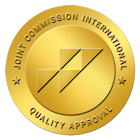Methamphetamine, commonly known as meth, is a powerful and highly addictive stimulant that can wreak havoc on a person’s physical health. While the toll it takes on the body is profound, the effects of meth abuse tend to be most visibly apparent in a person’s face. A condition often referred to as “meth face” is marked by skin lesions, sores, premature aging, and significant dental damage. This deterioration can have a devastating impact on self-esteem and overall well-being.
Meth Face: How Meth Alters a Person’s Appearance

The term “meth face” describes the drastic changes in appearance that occur in individuals who abuse meth. The drug triggers a series of harmful physical effects that accelerate the aging process, leading to a worn-out, gaunt appearance. Here are the key changes of how meth changes the body and contributes to the meth face phenomenon:
Skin Damage and Sores
Meth users often develop compulsive skin-picking behaviors due to a sensation known as “formication,” which is the feeling of bugs crawling on or under the skin. This leads to open sores, scabs, and scars, which are slow to heal due to poor overall health and weakened immune function. Meth also constricts blood vessels, reducing blood flow and depriving the skin of oxygen and nutrients. As a result, wounds heal slowly and can leave lasting scars.
Extreme Weight Loss
Methamphetamine acts as a potent appetite suppressant, leading to significant weight loss. People who abuse meth often become malnourished, which can give their faces a sunken or hollow appearance. This unhealthy weight loss exaggerates the skeletal structure of the face, further contributing to the gaunt look associated with meth addiction.
Premature Aging
Meth’s impact on collagen production and circulation results in premature wrinkling and sagging of the skin. This can give users an older, weathered appearance. Chronic meth use also leads to dehydration, which dries out the skin and leaves it rough and dull. The combination of wrinkles, sagging, and dehydration can significantly age a person’s face in a short period of time.
Meth Mouth: Severe Dental Damage
Another hallmark of meth addiction is a condition called “meth mouth.” This refers to the severe dental issues that arise from long-term meth abuse, which often leaves users with damaged, rotting, or missing teeth.
Dry Mouth (Xerostomia)
Methamphetamine reduces saliva production, which leads to dry mouth. Saliva plays a crucial role in protecting teeth by washing away food particles and neutralizing acids produced by bacteria. Bacteria multiply rapidly without sufficient saliva, which can lead to tooth decay and gum disease.
Tooth Grinding (Bruxism)
Meth users often experience jaw clenching and teeth grinding, a side effect of the stimulant’s effects on the nervous system. Chronic bruxism wears down the teeth, leading to fractures, chipping, and eventual tooth loss.
Poor Oral Hygiene
Meth addiction often causes people to neglect personal hygiene, including dental care. Meth users may skip brushing and flossing their teeth, which accelerates the decay process. Combined with frequent consumption of sugary foods and drinks (often craved during meth binges), this results in widespread tooth decay and gum infections.
Meth Teeth: The Results of Meth Mouth
The term “meth teeth” refers to the advanced stages of meth mouth, where the teeth are severely damaged or decayed. Meth users commonly experience the following dental issues:
- Tooth Decay: Teeth can rot from the inside out due to the constant exposure to bacteria and lack of protective saliva. Cavities spread quickly, and once-healthy teeth become blackened, crumbled, or even lost entirely.
- Tooth Loss: As the structural integrity of the teeth weakens, they can fall out or need to be extracted. Many long-term meth users are left with few (if any) natural teeth.
- Gum Disease: Meth use can cause severe gum disease (periodontitis), which destroys the soft tissue and bone supporting the teeth. This leads to painful infections and can result in tooth loss.
Can Your Face Heal After Meth?
The damage caused by meth abuse is often severe, but the body has an incredible ability to heal once meth use stops. But the extent of recovery depends on the individual and the level of damage done. Some aspects of meth face and meth mouth can improve with proper care, but others may require medical or cosmetic intervention.
Once a person stops using meth, their skin can begin to heal. Wounds, sores, and scars may fade over time, but deep scarring may require dermatological treatments such as laser therapy. Maintaining a healthy diet, staying hydrated, and following a good skincare routine can also help improve the skin’s appearance.
Proper nutrition and exercise can help a person regain a healthy weight and restore muscle tone. Some facial changes caused by extreme weight loss, such as sagging skin, may not fully reverse without medical treatment.
Unfortunately, once teeth are severely decayed or lost, they cannot be restored without dental intervention. Dentists can address meth mouth by performing extractions, installing dentures, or applying crowns and veneers. Long-term oral health can improve with regular dental care and maintaining sobriety.
It’s important to remember that meth addiction impacts more than just a person’s physical appearance. Recovery is also about healing mentally and emotionally. Many individuals experience depression, anxiety, or low self-esteem due to the toll meth abuse has taken on their appearance, and therapy can be essential in addressing these issues.
Crestview Recovery Meth Addiction Treatment Program

Crestview Recovery, located in Portland, Oregon, provides comprehensive treatment for methamphetamine addiction. At Crestview, individuals struggling with meth abuse can find hope and healing through a variety of evidence-based programs designed to address the unique challenges of meth addiction.
Services offered include:
- Inpatient and Outpatient Programs: Depending on a person’s needs, Crestview provides both residential inpatient treatment and outpatient care, allowing clients to receive the level of support that’s best for their recovery journey.
- Behavioral Therapy: Crestview’s therapy programs focus on cognitive-behavioral therapy (CBT), dialectical behavior therapy (DBT), and other modalities to help individuals change the negative thought patterns that fuel addiction.
- Dual Diagnosis Treatment: Meth addiction is often accompanied by co-occurring mental health issues like depression or anxiety. Crestview’s dual diagnosis treatment addresses both the addiction and any underlying mental health conditions.
- Long-Term Support: Recovery from meth addiction requires ongoing support, and Crestview offers aftercare planning, relapse prevention strategies, and sober living options to help individuals maintain their sobriety.
Contact our team of specialists to learn more about meth treatment and design a personalized treatment plan!
































